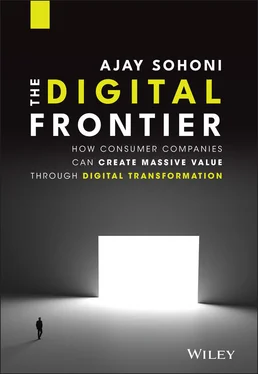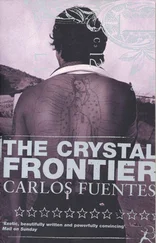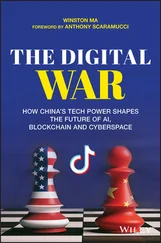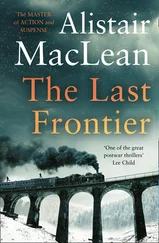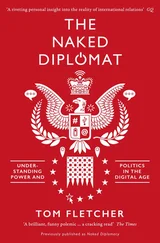All rights reserved. No part of this publication may be reproduced, stored in a retrieval system, or transmitted, in any form or by any means, electronic, mechanical, photocopying, recording or otherwise, except as permitted by the UK Copyright, Designs and Patents Act 1988, without the prior permission of the publisher.
Wiley publishes in a variety of print and electronic formats and by print‐on‐demand. Some material included with standard print versions of this book may not be included in e‐books or in print‐on‐demand. If this book refers to media such as a CD or DVD that is not included in the version you purchased, you may download this material at http://booksupport.wiley.com. For more information about Wiley products, visit www.wiley.com.
Designations used by companies to distinguish their products are often claimed as trademarks. All brand names and product names used in this book are trade names, service marks, trademarks or registered trademarks of their respective owners. The publisher is not associated with any product or vendor mentioned in this book.
Limit of Liability/Disclaimer of Warranty: While the publisher and author have used their best efforts in preparing this book, they make no representations or warranties with respect to the accuracy or completeness of the contents of this book and specifically disclaim any implied warranties of merchantability or fitness for a particular purpose. It is sold on the understanding that the publisher is not engaged in rendering professional services and neither the publisher nor the author shall be liable for damages arising herefrom. If professional advice or other expert assistance is required, the services of a competent professional should be sought.
Library of Congress Cataloging‐in‐Publication Data
Names: Sohoni, Ajay, author. | John Wiley & Sons, publisher.
Title: The digital frontier : how consumer companies can create massive value through digital transformation / Ajay Sohoni.
Description: [Hoboken, NJ] : Wiley, 2021. | Includes index.
Identifiers: LCCN 2021008534 (print) | LCCN 2021008535 (ebook) | ISBN 9781119803249 (cloth) | ISBN 9781119803256 (adobe pdf) | ISBN 9781119803263 (epub)
Subjects: LCSH: Business enterprises—Technological innovations. | Customer relations.
Classification: LCC HC79.T4 S736 2021 (print) | LCC HC79.T4 (ebook) | DDC 658.4/06—dc23
LC record available at https://lccn.loc.gov/2021008534LC ebook record available at https://lccn.loc.gov/2021008535
Cover Design: Wiley
Cover Image: © Getty Images
To my parents, for accidentally engineering a hyper‐curious and free‐spirited professional and giving me the twin gifts of language and humor. I think it worked out okay this time, but I highly doubt that it is repeatable.
WHY I WROTE THIS BOOK AND WHY YOU SHOULD READ IT
It was early July in 2020 and we were just emerging from the COVID‐19 lockdown in Singapore, termed the “circuit breaker” here. A six‐week period of closure, distancing and disciplined social behavior which saved the city from the pandemic. A little after 8 am and I was sitting with my wife at the beautiful outdoor seating at a café in Singapore's quiet, green and modern media district, having just dropped my five‐year‐old off for Day One of her arts camp nearby. The wide‐open space and the understated grandeur of the Fumihiko Maki‐designed Mediapolis was further magnified this morning by the fact that my wife and I were the only people there. I was meant to take two weeks off from work, people had stopped taking days off since the pandemic started and the company had urged us to take time off and look after ourselves.
“I am concerned about two things”, I told my wife. I wasn't sure about how to use the two weeks productively. I was also at an inflection point in my career, having spent the last six years in the digital and technology‐enabled business space I was looking to move on to something else. But I loved the space I was in and I felt like I still had a lot to offer; it worried me that I would allow everything I knew to just fall into obsolescence if I left “the scene”. My wife is much smarter than me, and I am not just saying that to demonstrate my own humility, we don't do that in my generation anymore. That question was settled 11 years ago when she outscored me on the GMAT and she likely had a better GPA than I did at INSEAD where we met. But we will never know, because we have continued INSEAD's grade non‐disclosure policy in our household.
“Write a book”, she said. So, I did.
This book is an aggregation of my understanding and my opinions about driving digital transformation in consumer‐facing business. For me, specifically, that comes from my experiences in digital during my startup tenure at Lazada, in transformations during my time at McKinsey, and in consumer‐facing business at the Coca‐Cola company. In my fourteen‐year career so far, I've been lucky enough to have worked in most corners of the world in a variety of companies that have given me an incredible array of experiences. The number of times there has been a day which ended in a high (or a low) and I've wished I could just tell everyone about it! So, this here is my chance to share with you readers some of what I have learnt so far. But before we get into the main body of this book, I want to share three distinct memories with you from three of the many events in my career so far that have made an impression, all three involving three admirable leaders.
The year was 2010 and it was starting to get cooler in Amsterdam, around November. Little did we know that we'd end the year in a snow‐storm that would close the airport for a few days. But, on that cold November day I was helping put together the final edits on a presentation in one of the meeting rooms in McKinsey's beautiful office on the picturesque Amstel river. Our client was a large consumer products conglomerate and the recently appointed CEO was holding a gala event to end the year at the 300+‐year‐old Amsterdam Hermitage museum. Top business leaders from around the world were assembled here in a beautiful space and, while the light and sound engineers were rigging the place up, we were conferring with the CEO on some nuances of his speech and presentation. That night he launched a transformational journey that has spanned a decade, taking this multi‐country and multi‐category business, splitting and carving and buying and stitching it together into a completely new form, while at the same time changing the way the company operated from inside out. Looking back at that evening on the Amstel, thinking about the moves that were then mere bullet points on a PowerPoint slide, and looking at the ensuing actions two qualities of this transformational leader shine through: Courage and commitment.
Five years later, and this time it was November again and also very cold in Hangzhou, China. Still groggy from the short overnight flight and drive from Shanghai I walked into a conference room at the sprawling and impressive Alibaba campus. We were here to meet Daniel Zhang, the CEO of Alibaba. Lazada group, one of Southeast Asia's leading e‐commerce companies, was discussing an investment from Alibaba and I was running Lazada's payments company, which would then be acquired by Alipay. A few months later Alibaba acquired a controlling stake in Lazada, but we were still in the midst of negotiations in November 2015. Mr. Zhang had an intense aura about himself. He spoke in a calm collected way, every word measured to make a specific incisive point. We spent maybe 30 minutes talking about what consumers value, what merchants value, and what brands value. No complex tech terminology, no mention of buzzwords like fintech and, worse still, blockchain. Daniel Zhang is an incredibly impressive leader and, looking back at that interaction, I realized the core idea, that you'll see me repeat several times in the book, is that the objective is to create commercial value using technology, not to apply technology for the sake of it and then find associated commercial value in some way. Two transformational qualities: Pragmaticism and focus.
Читать дальше
